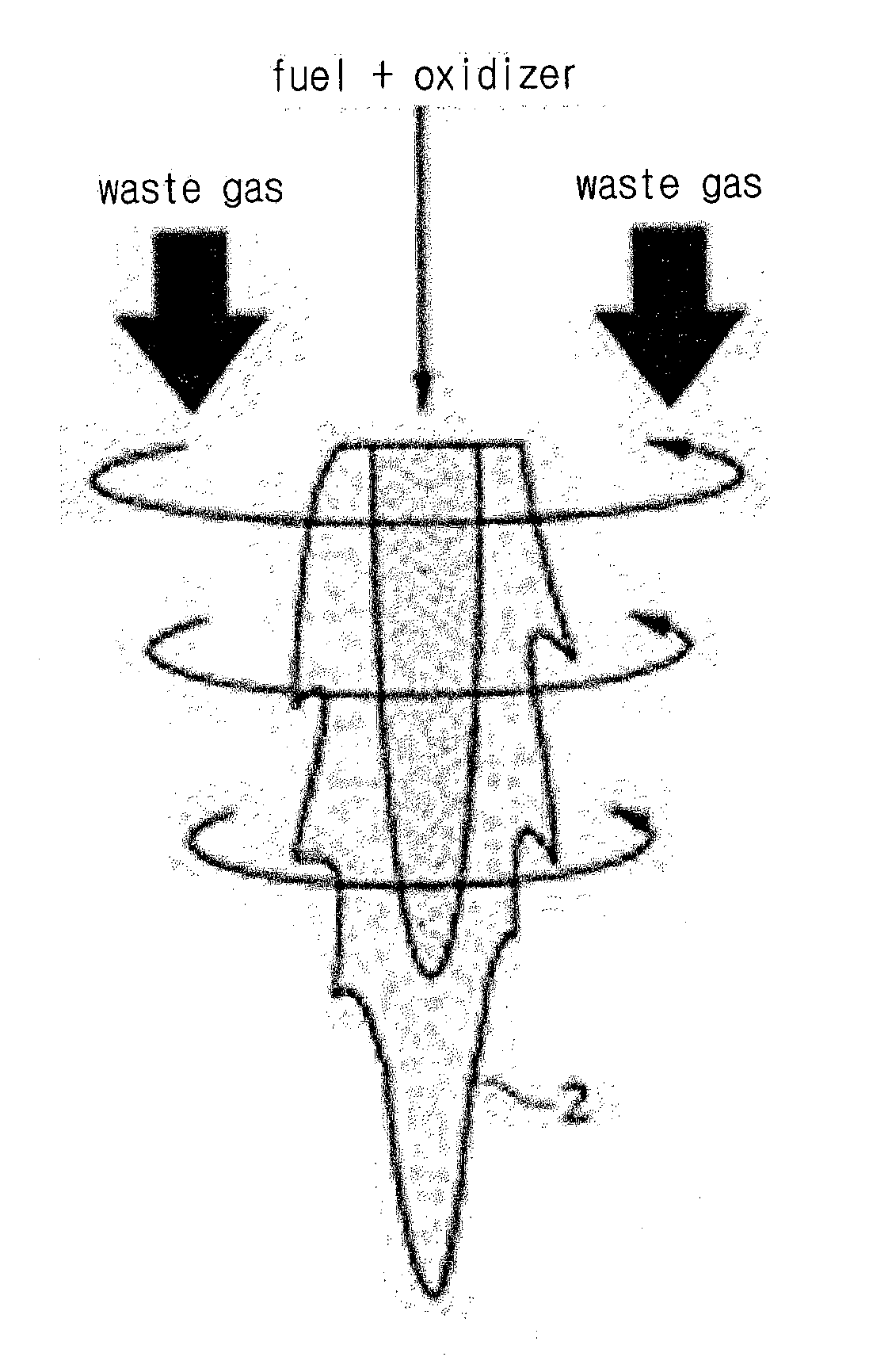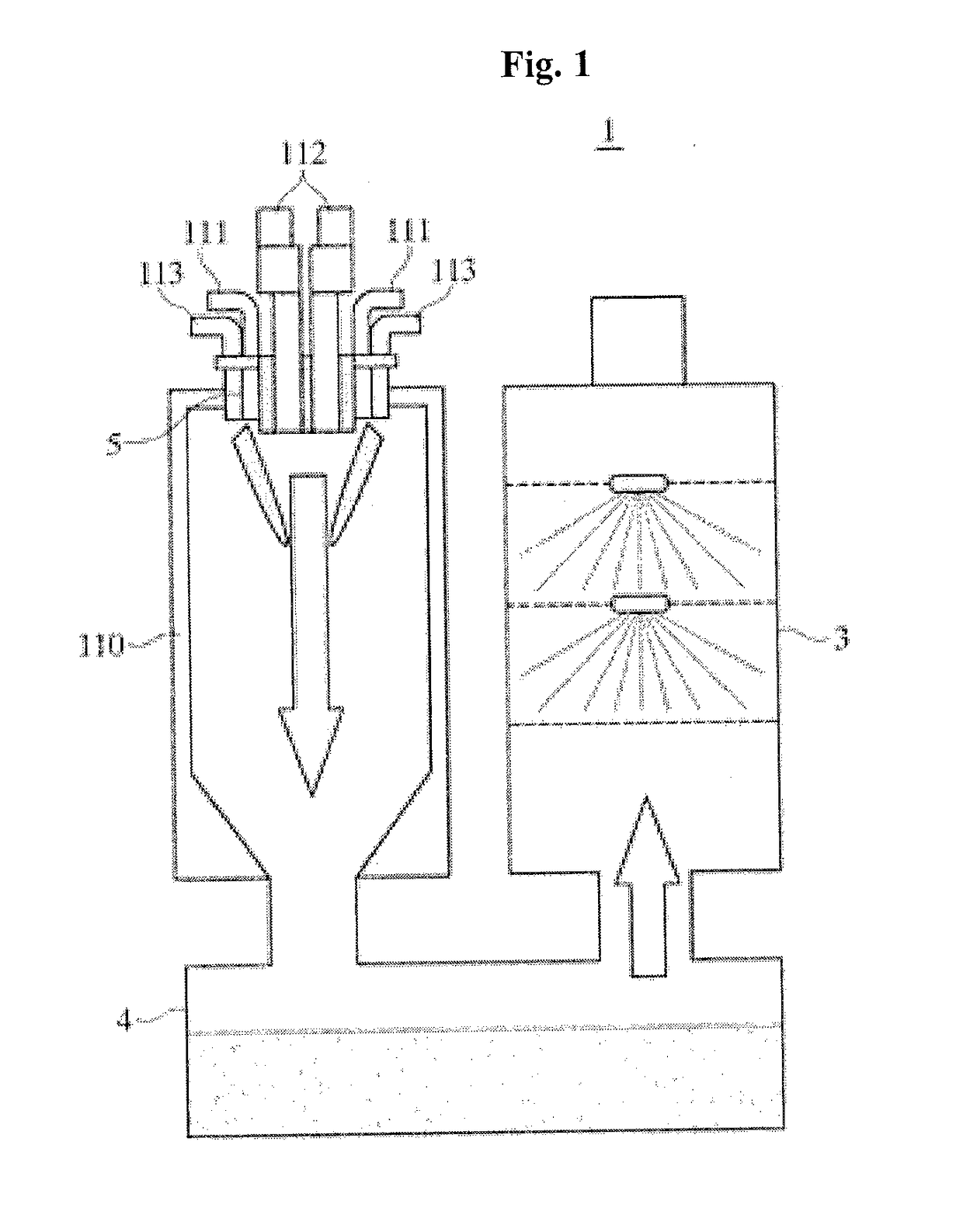Energy saving combustion device for burning refractory hazardous gas and method for operating the same
a technology of hazardous gas and combustion device, which is applied in the direction of combustion type, lighting and heating apparatus, incinerator apparatus, etc., can solve the problems affecting and affecting the health of human bodies, so as to improve the treatment efficiency of waste gases and reduce the effect of toxicity and explosion
- Summary
- Abstract
- Description
- Claims
- Application Information
AI Technical Summary
Benefits of technology
Problems solved by technology
Method used
Image
Examples
Embodiment Construction
[0063]Hereinafter, the technological configurations of a combustion device for burning refractory hazardous gases according to the present invention will be in detail described with reference to drawings. If it is determined that the detailed explanation on the well known technology related to the present invention makes the scope of the present invention not clear, the explanation will be avoided for the brevity of the description.
[0064]In the description, also, the corresponding parts in the embodiments of the present invention are indicated by corresponding reference numerals and the repeated explanation on the corresponding parts will be avoided. Further, the term ‘coupled’ or ‘connected’, as used herein, is defined as connected, although not necessarily directly, and not necessarily mechanically. To the contrarily, the term ‘directly coupled’ or ‘directly connected’, as used herein, is defined as connected without having any component disposed therebetween.
[0065]Hereinafter, an...
PUM
 Login to View More
Login to View More Abstract
Description
Claims
Application Information
 Login to View More
Login to View More - R&D
- Intellectual Property
- Life Sciences
- Materials
- Tech Scout
- Unparalleled Data Quality
- Higher Quality Content
- 60% Fewer Hallucinations
Browse by: Latest US Patents, China's latest patents, Technical Efficacy Thesaurus, Application Domain, Technology Topic, Popular Technical Reports.
© 2025 PatSnap. All rights reserved.Legal|Privacy policy|Modern Slavery Act Transparency Statement|Sitemap|About US| Contact US: help@patsnap.com



